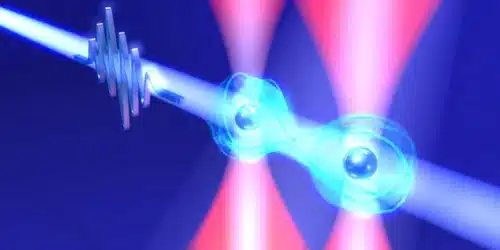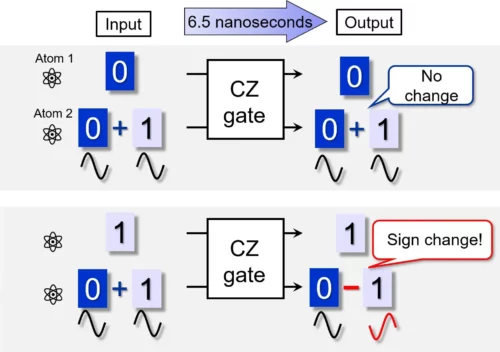A research team succeeded in executing the world’s fastest two-qubit gate that can lead to the next generation of superfast quantum computing.
There are several ways to build a quantum computer, and for the past two decades all these computer hardwares have been focused on pursuing faster gates to eliminate the effects of external noise for preventing computational errors. One of these techniques is by cooling the atoms to absolute zero temperature and manipulating it with the help of an ultrafast laser.

A research team used atoms cooled to almost absolute zero temperature and trapped between optical tweezers at a distance of a micron or so. They manipulated the atoms by shining a special laser light for 10 picoseconds. The resultant was a fundamental operation essential for quantum computing, world’s fastest two-qubit gate operating in just 6.5 nanoseconds.
Atoms are considered to be the natural quantum systems and can store quantum bits(Qubits) of information. These atoms are well isolated from the surrounding environment and independent of each other due to which the time when quantum superposition persists can reach several seconds for a qubit. The two-qubit gate is performed by exciting one electron of these independent atoms into a giant electronic orbit called the Rydberg orbital.
This implementation of two-qubit gate is called a “ controlled-Z gate(CZ gate)” which is an operation that flips the quantum superposition of the first qubit from 0+1 to 0-1 depending on the state (0 or 1) of a second qubit. This implementation has been able to achieve the speed required to avoid the degradation of calculation accuracy due to noise.

With these techniques the cold atom platform has emerged as one of the most promising candidates for quantum computer hardware. This technology has revolutionary potential as it can be scaled up to a larger scale while maintaining high coherence compared to the superconducting and trapped ion types of quantum computers. This technology is attracting attention from industry, academia and government around the world as the next generation of quantum computer hardware.
Reference: “Ultrafast energy exchange between two single Rydberg atoms on the nanosecond timescale” 8 August 2022, Nature Photonics.
DOI: 10.1038/s41566-022-01047-2







